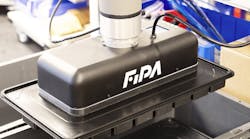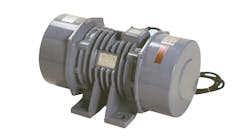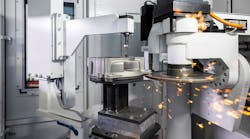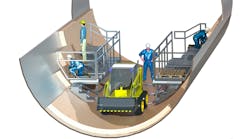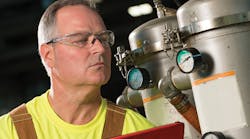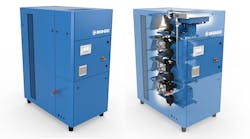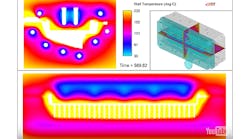FLOW SCIENCE INC. released version 11.1 of FLOW-3D, its flagship computational fluid-dynamics software for solving “free-surface flow problems,” notably for simulating casting processes. One of the claims highlighted for the new release is the program’s effectiveness for improving users’ workflow control and automation. The new developments include active simulation control, batch post-processing and report generation.
Active simulation control lets users control the design stages of their simulations helping them to better understand and fine-tune parameters in their manufacturing processes.
Batch post-processing, the ability to request desired output prior to launching a simulation, for automatic generation upon conclusion of the simulation, will save users valuable time.
The new report generation function enables users to create HTML-based reports on customizable templates, allowing them to communicate simulation results in a light and portable manner.
“’Time is money’ goes the saying, and with v11.1, we’ve taken that to heart,” explained Tom Jensen, Flow Science Inc. president. “Not only will batch post-processing and report generation make life simpler and communication easier for our customers, but new features like active simulation control will greatly enhance their flexibility in designing simulations.”
Other noteworthy models and improvements to the solver and GUI include:
• GIS raster data interface
• Mooring lines model
• Solid propellant combustion modeling
• Full process thermal die cycling model
• Squeeze pin model, and
• Improved runtimes and solver optimization
The new release also has several new functions that are specifically addressed to the program’s metalcasting applications. Squeeze pins can now be simulated to model the behavior of the actual diecasting machines, where they are used to compensate metal shrinkage during solidification in hard-to-feed areas of the casting.
The use of the PQ2 diagram allows users to effect better approximations of the real-life behavior of a shot sleeve plunger. This new function is said to be especially useful during the diecasting design stage, when the actual process parameters are not yet known.
The thermal die cycling (TDC) model is enhanced now by the addition of two new stages: the ejection stage, when the die is open but the part is still inside the ejector side, and the preparation stage, when the die is closed just before the filling. In addition, the TDC solver has been optimized to deliver a fully converged solution during all thermal die cycles, instead of targeting it toward the last one. This is achieved at no loss to performance.
External pressure and temperature at valves and vents can be defined now as a tabular function of time, allowing users to define a more realistic behavior of these components of the die casting process during filling. The valve/vent pressure and temperature can also be controlled by probes placed inside the cavity, which is useful during the process design stage.
Cooling channels can now be controlled by the total amount of heat removed or added by each cooling channel to the die.
Visit www.flow3d.com
